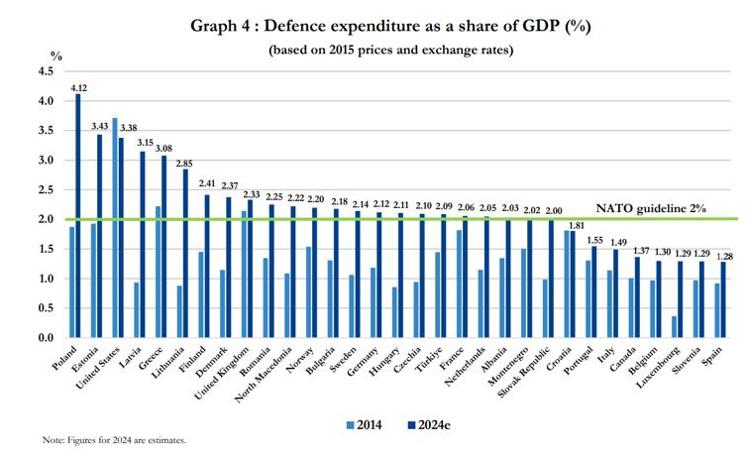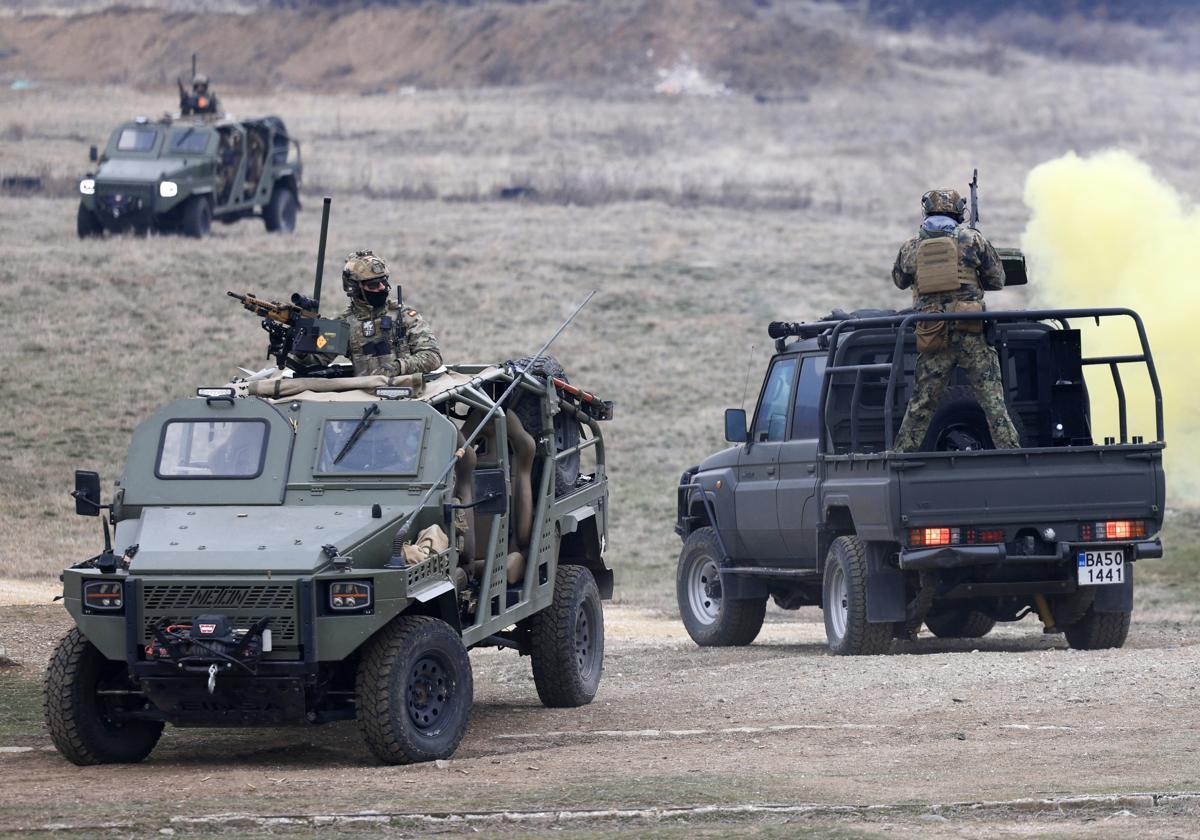Defence expenditure in Spain: how much of the GDP is allocated and how does it compare to the rest of the Nato countries?
In 2014 all members of this North Atlantic alliance committed to spending at least 2% of their national gross domestic product on their military expenditure, but are they?
Patricia Marcos
Madrid
Wednesday, 19 February 2025, 09:34
A dozen leaders of European Union and Nato countries held an urgent meeting in Paris on Monday to draw up a common response as to the security of European members of this long-standing, intercontinental alliance in the midst of the shift in US policy over the war in Ukraine with the return of Donald Trump to the US presidency.
The imminent meeting between the US president and Russian president Vladimir Putin, in which the end of the war unleashed by Russia in the Ukraine will be discussed without Kiev or the European powers present, has put Europe's security at a "turning point", according to a comment on social media from the European Commission president, Ursula von der Leyen, before the start of Monday's meeting in the French capital.
For this reason Von der Leyen insisted on the need to increase Europe's defence spending. "It's about Ukraine, but it's also about us. We need a mindset of urgency. We need an increase in defence. And we need it right now," she wrote on X.
What is Nato's commitment?
The North Atlantic Treaty Organization (Nato) countries last pledged in 2014, after Russia's annexation of the Ukrainian peninsula of Crimea, to spend at least 2% of their GDP (gross domestic product) on military expenditure. This is a commitment that, by 2024, only 23 of the 31 nations that make up this alliance had fulfilled.
However, several voices are calling for this target to be increased. Trump accuses the other members of Nato of not doing enough to ensure its protection and demands they increase military spending to 5%.
As for Nato's leader, Mark Rutte, he raised the point last week that Europe must spend "much more" than 2% to ensure its defence. In particular, he set the new military investment commitment at over 3% of GDP: "It is simply unacceptable. And not just because President Trump is asking us to do it, but because we have to defend ourselves."
How much of Spain's GDP does it spend on defence and where does it stand in the list of other Nato countries?
Spain's contribution to Nato in relation to its GDP is 1.28%, according to Nato data, compared to 1.19% the previous year. This makes Spain the Nato nation that spends the lowest percentage of its GDP on defence, as has been the case for some time.
In contrast, Poland is the country that spends the highest percentage of its GDP on defence, currently at 4.12%. Estonia (3.43%) and the United States (3.38%) are the next biggest spenders.

Spain's 1.28% is clearly below the 2% to which all Nato countries committed themselves in 2014. However, there are seven other countries that do not meet this target either: Croatia (1.81%), Portugal (1.55%), Italy (1.49%), Canada (1.37%), Belgium (1.30%), Luxembourg (1.29%) and Slovenia (1.29%).
Will Spain increase its defence spending?
In the midst of the debate on Nato countries' defence spending and with Spain in the eye of the storm, Spain's Minister of Foreign Affairs, José Manuel Albares, maintained on Monday that it is "unthinkable" in the short term for any EU country to achieve the increase in spending that is being proposed.
At a joint press conference with his Brazilian counterpart, Mauro Vieira, Albares rejected US pressure and reiterated that "Spain has a target date of 2029 for reaching 2%" of GDP. "We are increasing defence spending and we are taking steps towards this," he said. This was after being asked whether it would be possible to bring deadlines forward.
